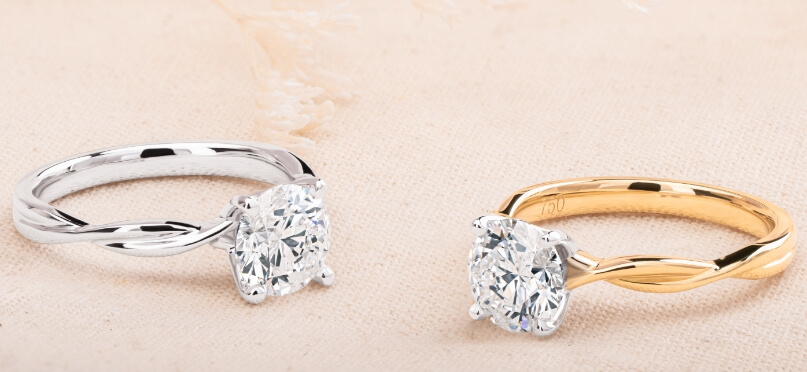Lab diamonds have transformed the 랩다이아 4c, offering a sustainable and ethical alternative to natural diamonds. Among the various factors that define a diamond’s quality, the 4Cs—Cut, Color, Clarity, and Carat weight—play a critical role in determining the beauty and value of lab-created diamonds. In this comprehensive article, we delve into each of these components, exploring how they apply specifically to lab-made diamonds and why they are becoming increasingly popular among consumers.
The Significance of the 4Cs in Lab-Made Diamonds
Understanding the 4Cs is essential for anyone looking to invest in a lab diamond. Each component contributes to the overall aesthetic and value of the diamond, making it crucial to understand what to look for when purchasing.
Cut: The Heart of Diamond Brilliance
The cut of a diamond is arguably the most significant factor affecting its overall appearance. It refers not just to the shape of the diamond—such as round, princess, or oval—but also to how well the diamond has been shaped and polished. A well-cut diamond will reflect light beautifully, exhibiting brilliance and sparkle.
For lab diamonds, achieving an exceptional cut is essential. The precision of the cut determines how light interacts with the stone, influencing its visual appeal. Lab-grown diamonds can achieve ideal cuts with greater consistency due to the controlled environment in which they are created. This results in diamonds that often exceed the quality of their natural counterparts.
Color: The Spectrum of Lab Diamonds
The color of a diamond refers to the presence of any hue in what is intended to be a colorless diamond. The GIA (Gemological Institute of America) grades diamonds on a scale from D (colorless) to Z (light yellow or brown). For lab diamonds, color grading remains consistent with natural diamonds, providing an objective measure of quality.
Most consumers prefer diamonds that are graded between D and J for optimal brilliance. Lab diamonds can achieve higher color grades more consistently than natural diamonds because the growing process allows for the elimination of certain impurities that can cause color variations.
When selecting a lab diamond, consider that a color grade of D, E, or F represents the highest quality. These diamonds appear completely colorless, allowing for maximum light reflection. If you prefer a slightly warmer hue, diamonds graded G or H offer an excellent balance of quality and value.
Clarity: Assessing Inclusions and Flaws
Clarity measures the presence of internal or external flaws, known as inclusions and blemishes. The clarity scale ranges from Flawless (FL) to Included (I), with several grades in between. For lab diamonds, clarity is often more superior due to the controlled growing environment, allowing for fewer imperfections.
Most lab diamonds will fall into the VS (Very Slightly Included) to VVS (Very Very Slightly Included) categories, indicating minimal inclusions that are difficult to detect even under magnification. When assessing clarity, consider how visible the inclusions are and their impact on the diamond’s overall appearance.
Investing in a lab diamond with high clarity ensures that your stone will be visually stunning. Typically, diamonds graded SI1 (Slightly Included) can still appear beautiful to the naked eye, making them a popular choice for those looking for value without sacrificing appearance.
Carat Weight: Size Matters
Carat weight refers to the weight of the diamond, which directly correlates with its size. One carat is equivalent to 200 milligrams, and diamonds can be measured down to the hundredth of a carat for precision. The size of a diamond can significantly influence its overall price.
When shopping for lab diamonds, it’s essential to balance carat weight with the other 3Cs. A larger carat weight can be appealing, but a diamond with a lesser carat weight can often have a better cut, color, and clarity, resulting in a more dazzling appearance. For example, a 1.0-carat lab diamond with an excellent cut and near-colorless color will often appear more brilliant than a larger diamond that has lower grades in cut and color.
Moreover, lab diamonds are typically more affordable than their natural counterparts, allowing consumers to purchase larger stones without breaking the bank. Therefore, understanding your preferences regarding carat weight and how they fit within your budget is crucial when selecting a lab diamond.
The Benefits of Choosing Lab Diamonds
Opting for lab diamonds offers numerous advantages beyond their remarkable 4C characteristics. One of the primary benefits is their sustainability. Lab diamonds are created using eco-friendly practices, significantly reducing the environmental impact compared to traditional diamond mining. This sustainability appeals to ethically-conscious consumers seeking to make responsible purchasing decisions.
Additionally, lab diamonds are often more affordable than mined diamonds, allowing consumers to invest in higher quality stones for the same price. This affordability is particularly advantageous for those seeking larger diamonds or superior qualities in the 4Cs.
Furthermore, lab diamonds provide a conflict-free guarantee, ensuring that your purchase does not contribute to human rights violations associated with diamond mining in certain regions. This peace of mind is increasingly important for consumers today.
Conclusion: The Future of Lab Diamonds
As consumer awareness grows regarding the ethical implications of lab made diamonds mining and the environmental impact of natural diamonds, lab diamonds are poised to become the preferred choice for many. Their remarkable 4Cs, combined with their sustainable production, offer a compelling alternative that aligns with modern values.

